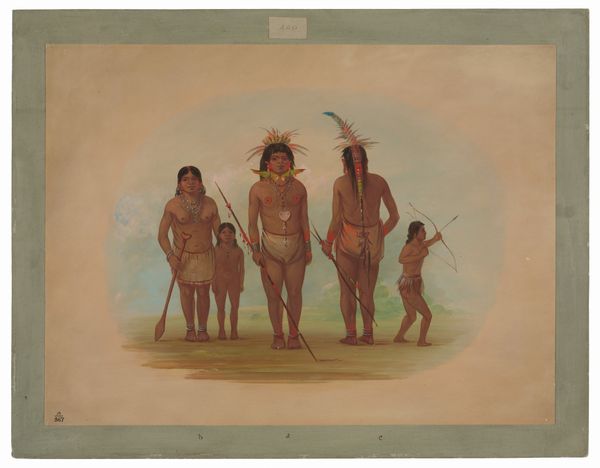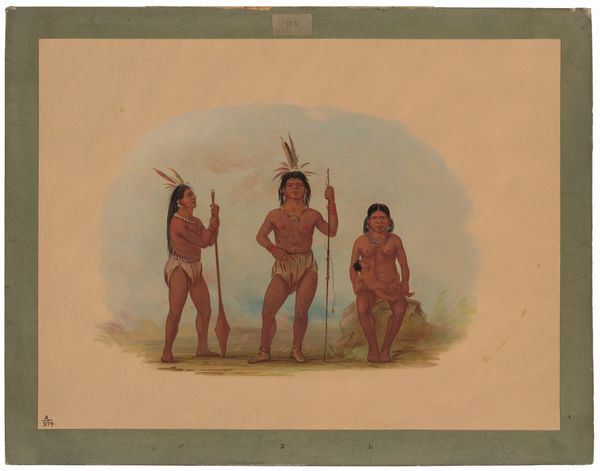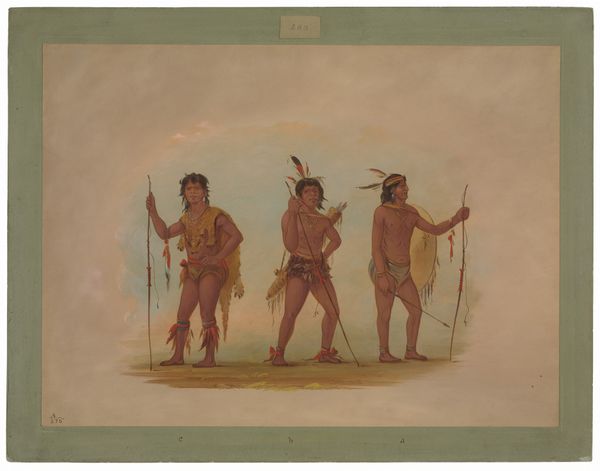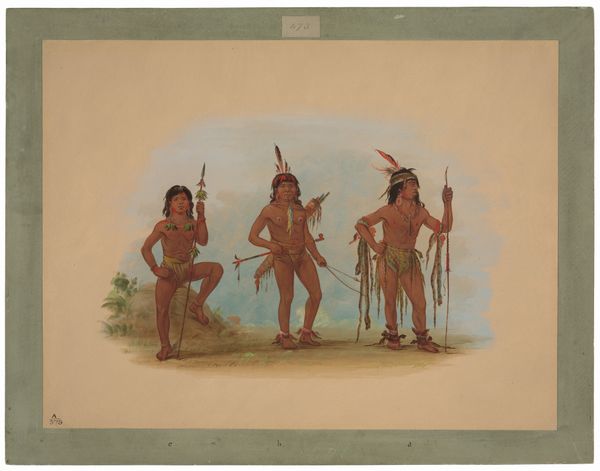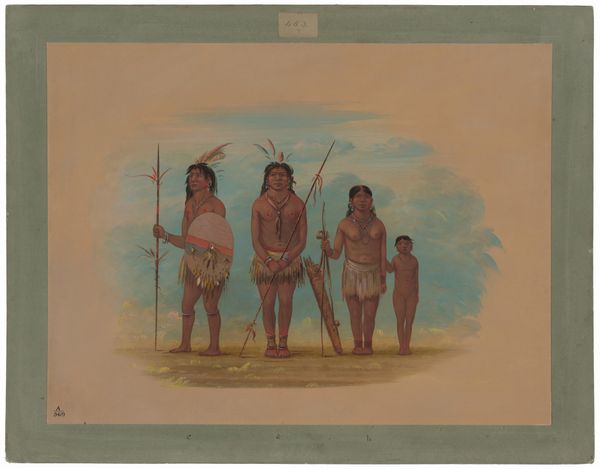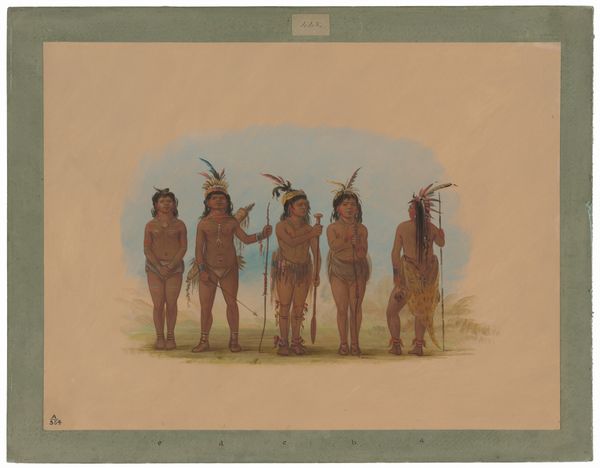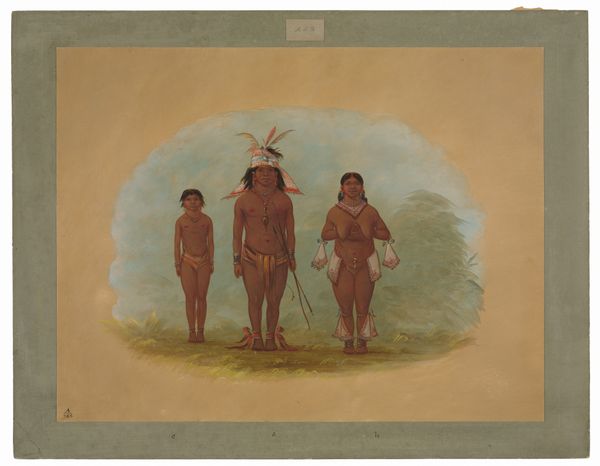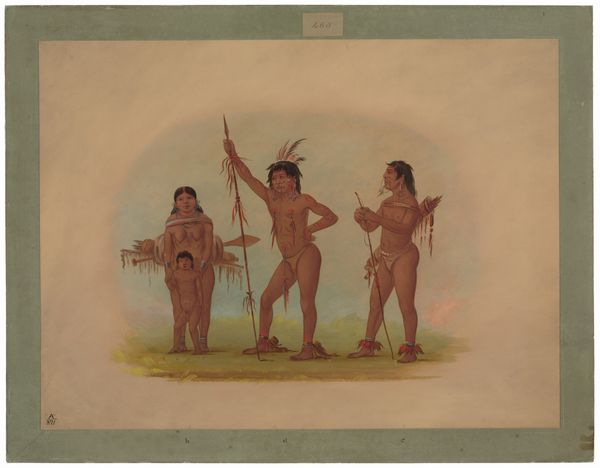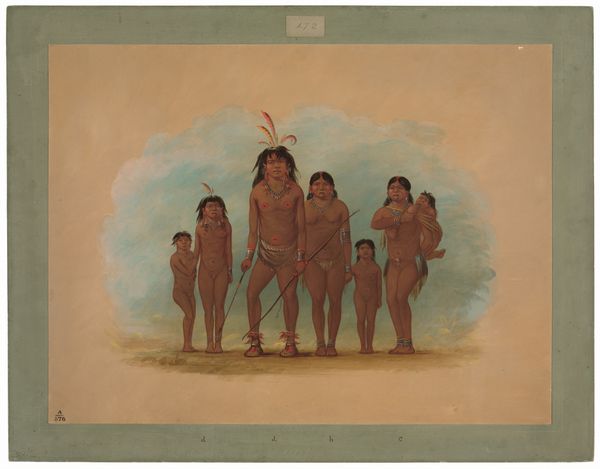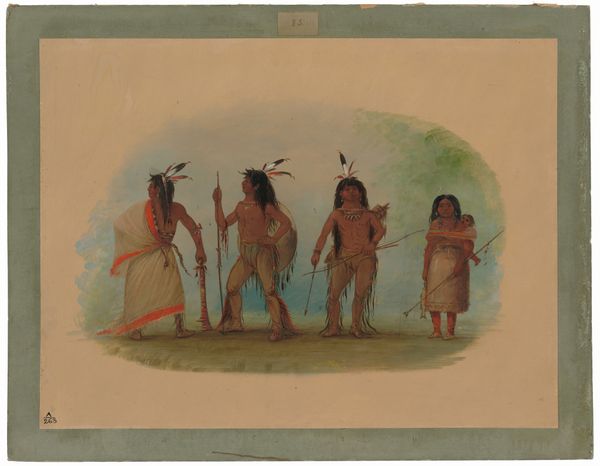
#
portrait
#
water colours
#
watercolor
Dimensions: overall: 46.3 x 61.5 cm (18 1/4 x 24 3/16 in.)
Copyright: National Gallery of Art: CC0 1.0
Curator: So, here we have George Catlin's "Klatsop Indians," created sometime between 1855 and 1869. It's a watercolor. Editor: The first thing that strikes me is its simplicity, almost a quiet melancholy. The pale background, the direct gazes... it feels like a memory fading. Curator: Absolutely. Catlin, of course, documented Indigenous peoples in the Americas. We have to acknowledge the complexities—the colonial gaze, the inherent power dynamics—while also understanding his work as a visual record. Editor: A record filtered through his own perception, naturally. I'm curious about their expressions; there's a certain reserve, isn’t there? It makes you wonder what they were thinking. Almost like a stage direction to "not show emotion". Curator: Exactly! And understanding the context, the U.S. government policies toward Indigenous populations during that time is crucial. Cultural assimilation, land seizure… Catlin was witnessing immense cultural shifts, and these portraits serve as testimonies. Editor: I can feel the sadness you are talking about, not explicitly showcased, but lingering beneath the surface of this very careful depiction. Curator: Watercolors, you know, create a specific feel. It’s not a heavy, layered oil painting imposing its grand message upon us. This allows a subtler approach, don't you think? It also emphasizes vulnerability, as though time may eventually wash it all away. Editor: Right. Looking at the child clutching the woman’s skirt makes my heart heavy, I feel a sense of fragility. And this kind of observation about human experience connects across cultural difference. Curator: Well said. The work opens avenues for discussing cultural representation, historical accuracy versus artistic license, and the role of art as a tool of documentation. Editor: Yes, exactly that intersection between how this culture saw itself versus how Catlin and his society perceived them. A ghost story, or perhaps an opening into new understandings? I think it makes one ask: What stories do we wish to share, and with what tone? Curator: And how that continues to affect how marginalized groups are being framed or perceived today. Art can act as catalyst for critical self-reflection. Editor: A powerful catalyst at that. Now I'm keen to delve more into his relationship with those he portrayed, were they able to steer or influence this documentation? Fascinating.
Comments
No comments
Be the first to comment and join the conversation on the ultimate creative platform.

